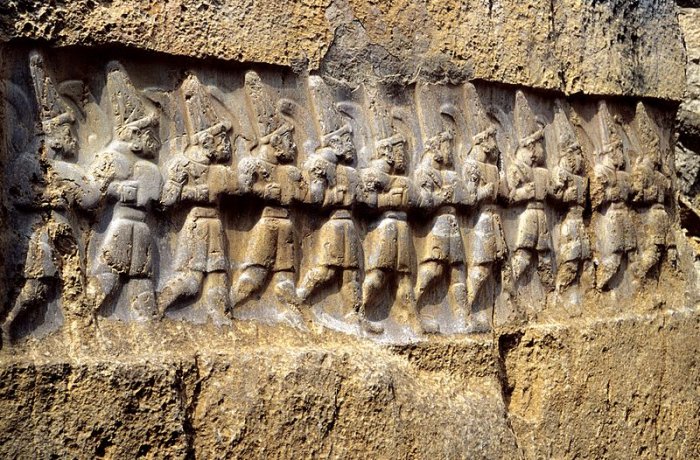Yazılıkaya: One Of The Most Striking Religious Shrines Of The Hittite Empire
A. Sutherland - AncientPages.com - The fascinating ancient Hittite sanctuary of Yazilikaya ('rock with writing') lies between rock outcroppings at the foot of the high ridge east of Hattusha, 170 kilometers east of Ankara and near the small town Boğazköy (Turkish: "Gorge Village") modern Boğazkale, Turkey.
Lion Gate, Hattusa, Turkey. Image credit: Bernard Gagnon - CC BY-SA 3.0
Archaeologists date the earliest settlement in the city of Boğazköy, which was discovered in 1834, to 3000 BC. Still, nothing is known about the identity of the first settlers of Boğazköy because there are no written documents that could shed light on the local history of this region.
However, remains of the ancient 'Great Fortress' (Büyükkale) on the east side of Boğazköy confirmed that it later became the acropolis of the Hittite kings.
The earliest written sources found at Boğazköy are clay tablets inscribed in cuneiform writing in the Old Assyrian language.
An open-air Hittite sanctuary, Yazilikaya, is one of the most striking religious shrines of the Hittite Empire (1400-1200 BC), and many gods and goddesses were worshiped there during this time.
Yazilikaya, Hittite sanctuary near Hattusa, Turkey, Chamber B Procession of the 12 Underworld Gods. Image credit: Klaus-Peter Simon - CC BY 3.0
Worshippers would pass through the temple and find themselves in the rock sanctuary with walls richly decorated with bas-reliefs depicting Hittite deities in pointed caps or magnificent tiaras on their heads.
Many rock reliefs exist in other Hittite sites, but they are smaller and more impressive than the galleries of gods at Yazilikaya. The reliefs in the shrine's main chamber include two long processions of gods that converge on a large rock face at center stage, where the famous Weather God of Heaven, Teshub, faces his consort.
Teshub was worshipped as the "King of Heaven, Lord of The Land of the Hatti." He is depicted as a bearded man, dressed in a kilt, with an ax in his belt, holding a spear in one hand and a symbolic flash of lightning in the other.
The gods are depicted on the west, and the goddesses on the east side of the gallery. Unfortunately, archaeologists have been able to identify only a few of these prominent figures.
Sharruma, the son of the two great gods renewing their marriage vows, stands right behind his mother and leads the line of divine ladies. On the west wall of the sanctuary, Shaushga, the Hittite version of the planet Venus as the goddess of war, marches with the men.
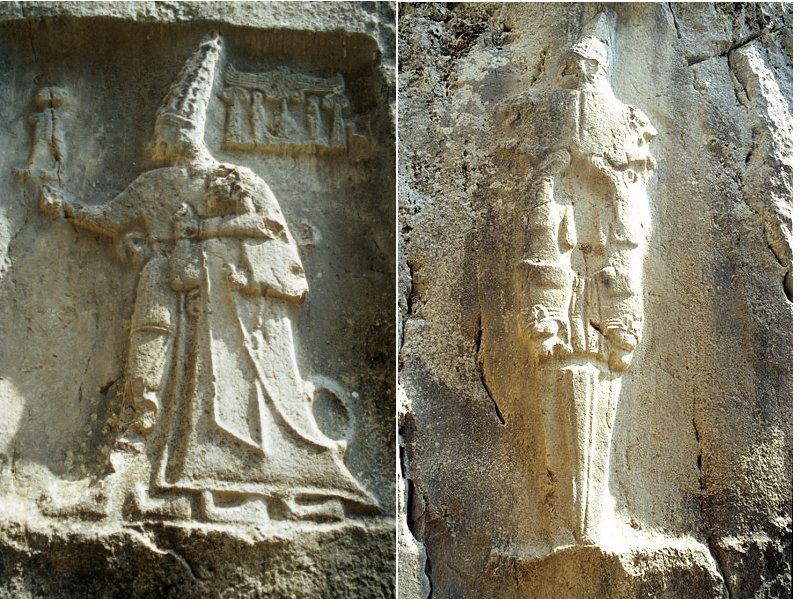 Left: Rock carving in Chamber B depicting god Sharruma and King Tudhaliya dated to around 1250 - 1220 BC. Image credit: Klaus-Peter Simon - CC BY 3.0; Right: Nergal, the underworld god in the era of Old Assyria and Old Babylonia. Image credit: Klaus-Peter Simon - CC BY 3.0.
Left: Rock carving in Chamber B depicting god Sharruma and King Tudhaliya dated to around 1250 - 1220 BC. Image credit: Klaus-Peter Simon - CC BY 3.0; Right: Nergal, the underworld god in the era of Old Assyria and Old Babylonia. Image credit: Klaus-Peter Simon - CC BY 3.0.
Archaeologists also recognized Telipinu, the son of the weather god and the patron god of vegetation, holding a twig or an ear of corn. The procession has many different winged figures, but only the Moon-god from Mesopotamia is recognizable. Interestingly, the carved hieroglyphics accompanying the gods at Yazilikaya identify the gods with Hurrian names. The Hurrians founded the kingdom of Mitanni southeast of the Anatolian plateau in northern Mesopotamia and eastern Syria.
Their language was not related to the Semitic peoples of Babylon or the Hittites.
Interestingly, the carved hieroglyphics accompanying the gods at Yazilikaya identify the gods with Hurrian names. The Hurrians founded the kingdom of Mitanni southeast of the Anatolian plateau in northern Mesopotamia and eastern Syria. Their language was not related to the Semitic peoples of Babylon or the Hittites.
Puduhepa, for example, the Hittite queen, came from Kizzuwatna, a Hurrian province in the southern lands of the Hittite empire, later known as Cilicia. The daughter of a priest and as a priestess herself, she brought tablets inscribed with the names of the gods to her Hittite husband. She was married to Hattushili III (1275— 1250 B.C.), who, along with their son, Tudhaliya IV (1250— 1220 B.C.), was ordered to carve the sculptures at Yazilikaya.
Yazilikaya Chamber B, Name Cartouche Tudhalija IV. Image credit: Klaus-Peter Simon - CC BY 3.0
His carved depiction is seen at the entrance to the sanctuary. He is dressed in the traditional long robes of the Hittite kings; he wears a curved sword and carries his pictograph symbol in his right hand.
Among other identified gods depicted in the wedding procession at Yazilikaya, there is Hepat, Teshub's bride and the goddess of cyclical renewal. Hepat was the great Hurrian Mother Goddess, and at the same, to Hittites, she was the Sun Goddess affiliated with the city of Arinna, the major cult center of this Hittite sun-goddess, also known as UTU Arinna or "Sun-Goddess of Arinna."
The great shrine at Yazilikaya and its marvelous sculptures, along with an ancient text: 'All the gods assembled and entered into the House of the Weather God,' prove that the Hittite kings celebrated a great festival of Heaven and Earth at the beginning of the year.
The Hittite New Year, which occurred in spring and probably coincided with the vernal equinox, was very important and widely celebrated, by the people of Mesopotamia.
Yazilikaya remains a vital historical moment at the height of the Hittite civilization.
Written by – A. Sutherland AncientPages.com Senior Staff Writer
Updated on Oct 1, 2023
Copyright © AncientPages.com All rights reserved. This material may not be published, broadcast, rewritten or redistributed in whole or part without the express written permission of AncientPages.com
Expand for referencesReferences:
M. Chase, Hebrew, Phoenicians, Hittites
E.C. Krupp, Skywatchers, Shamans, Kings
More From Ancient Pages
-
 On This Day In History: Maximilien Robespierre Sent To The Guillotine – On July 28, 1794
News | Jul 28, 2016
On This Day In History: Maximilien Robespierre Sent To The Guillotine – On July 28, 1794
News | Jul 28, 2016 -
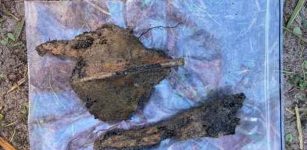 Intrepid Southern Voyage In The Wake Of Early Waka
Archaeology | Jun 28, 2023
Intrepid Southern Voyage In The Wake Of Early Waka
Archaeology | Jun 28, 2023 -
 Young Girl Finds Rare Ancient Megalodon Shark Tooth On Maryland Beach
Archaeology | Jan 16, 2023
Young Girl Finds Rare Ancient Megalodon Shark Tooth On Maryland Beach
Archaeology | Jan 16, 2023 -
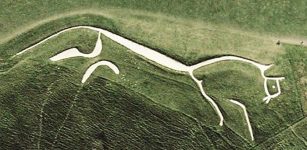 Mystery Of Prehistoric Gigantic Hill Figures Of England
Featured Stories | Sep 20, 2018
Mystery Of Prehistoric Gigantic Hill Figures Of England
Featured Stories | Sep 20, 2018 -
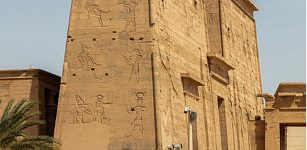 Researchers Use 21st Century Methods To Record 2,000 Years Of Ancient Graffiti In Egypt
Archaeology | Mar 31, 2023
Researchers Use 21st Century Methods To Record 2,000 Years Of Ancient Graffiti In Egypt
Archaeology | Mar 31, 2023 -
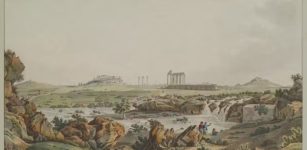 ‘The Waters Become Corrupt, The Air Infected’: Here’s How Ancient Greeks And Romans Grappled With Environmental Damage
Featured Stories | Nov 4, 2024
‘The Waters Become Corrupt, The Air Infected’: Here’s How Ancient Greeks And Romans Grappled With Environmental Damage
Featured Stories | Nov 4, 2024 -
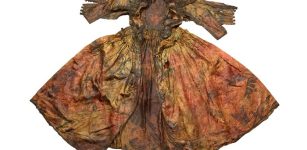 Unique 17th Century Silk Dress Found At Bottom Of The Wadden Sea Goes On Display
Artifacts | Jul 29, 2023
Unique 17th Century Silk Dress Found At Bottom Of The Wadden Sea Goes On Display
Artifacts | Jul 29, 2023 -
 Oldest Human Genome From The Iberian Peninsula Helps Reconstructing Human History
Archaeology | Mar 1, 2023
Oldest Human Genome From The Iberian Peninsula Helps Reconstructing Human History
Archaeology | Mar 1, 2023 -
 Astrape And Bronte – Twin Goddesses Of Lightning And Thunder Carried God Zeus’ Thunderbolts
Featured Stories | Jan 22, 2019
Astrape And Bronte – Twin Goddesses Of Lightning And Thunder Carried God Zeus’ Thunderbolts
Featured Stories | Jan 22, 2019 -
 Impressive And Rare Hoard Of Silver Coins Dated To The Hasmonean Period (126 BC) – Studied
Archaeology | Oct 14, 2021
Impressive And Rare Hoard Of Silver Coins Dated To The Hasmonean Period (126 BC) – Studied
Archaeology | Oct 14, 2021 -
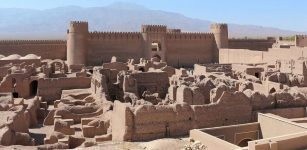 Graves Dated To Achaemenid Or Parthian Empire – Found In Iran
Archaeology | Aug 15, 2018
Graves Dated To Achaemenid Or Parthian Empire – Found In Iran
Archaeology | Aug 15, 2018 -
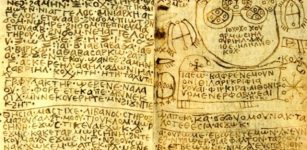 Ancient Mystery Of Baktiotha And The Egyptian Spell Book
Artifacts | Sep 4, 2015
Ancient Mystery Of Baktiotha And The Egyptian Spell Book
Artifacts | Sep 4, 2015 -
 Rock-Hewn Ancient Churches Of Lalibela
Civilizations | Aug 22, 2018
Rock-Hewn Ancient Churches Of Lalibela
Civilizations | Aug 22, 2018 -
 Oldest Human Remains Unearthed In Vietnam
Archaeology | Nov 15, 2023
Oldest Human Remains Unearthed In Vietnam
Archaeology | Nov 15, 2023 -
 Skegriedösen (Skegrie Dolmen) – 5,000-Year-Old Stone Chamber Tomb In Southern Sweden
Featured Stories | Feb 11, 2023
Skegriedösen (Skegrie Dolmen) – 5,000-Year-Old Stone Chamber Tomb In Southern Sweden
Featured Stories | Feb 11, 2023 -
 Giant 7,000-Year-Old Astronomical Calendar Discovered In Poland?
Archaeology | Dec 22, 2017
Giant 7,000-Year-Old Astronomical Calendar Discovered In Poland?
Archaeology | Dec 22, 2017 -
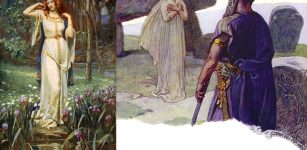 Unusual Power Of Seidr: Norse Shamans Used Magic To Alter Destiny And See The Future
Featured Stories | Oct 14, 2017
Unusual Power Of Seidr: Norse Shamans Used Magic To Alter Destiny And See The Future
Featured Stories | Oct 14, 2017 -
 Florida’s Ancient Underwater Burial Site Much Older Than Previously Thought
Archaeology | Jun 24, 2019
Florida’s Ancient Underwater Burial Site Much Older Than Previously Thought
Archaeology | Jun 24, 2019 -
 Rare Viking Artifacts Hidden Beneath The Ice Discovered By Archaeologists In Norway
Archaeology | Feb 6, 2021
Rare Viking Artifacts Hidden Beneath The Ice Discovered By Archaeologists In Norway
Archaeology | Feb 6, 2021 -
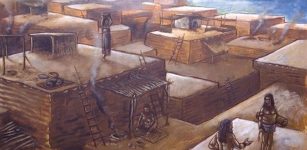 Çatalhöyük – 9,000 Years Ago: Overcrowding, Infectious Diseases, Violence And Environmental Problems Of Early Farmers
Archaeology | Jun 18, 2019
Çatalhöyük – 9,000 Years Ago: Overcrowding, Infectious Diseases, Violence And Environmental Problems Of Early Farmers
Archaeology | Jun 18, 2019


